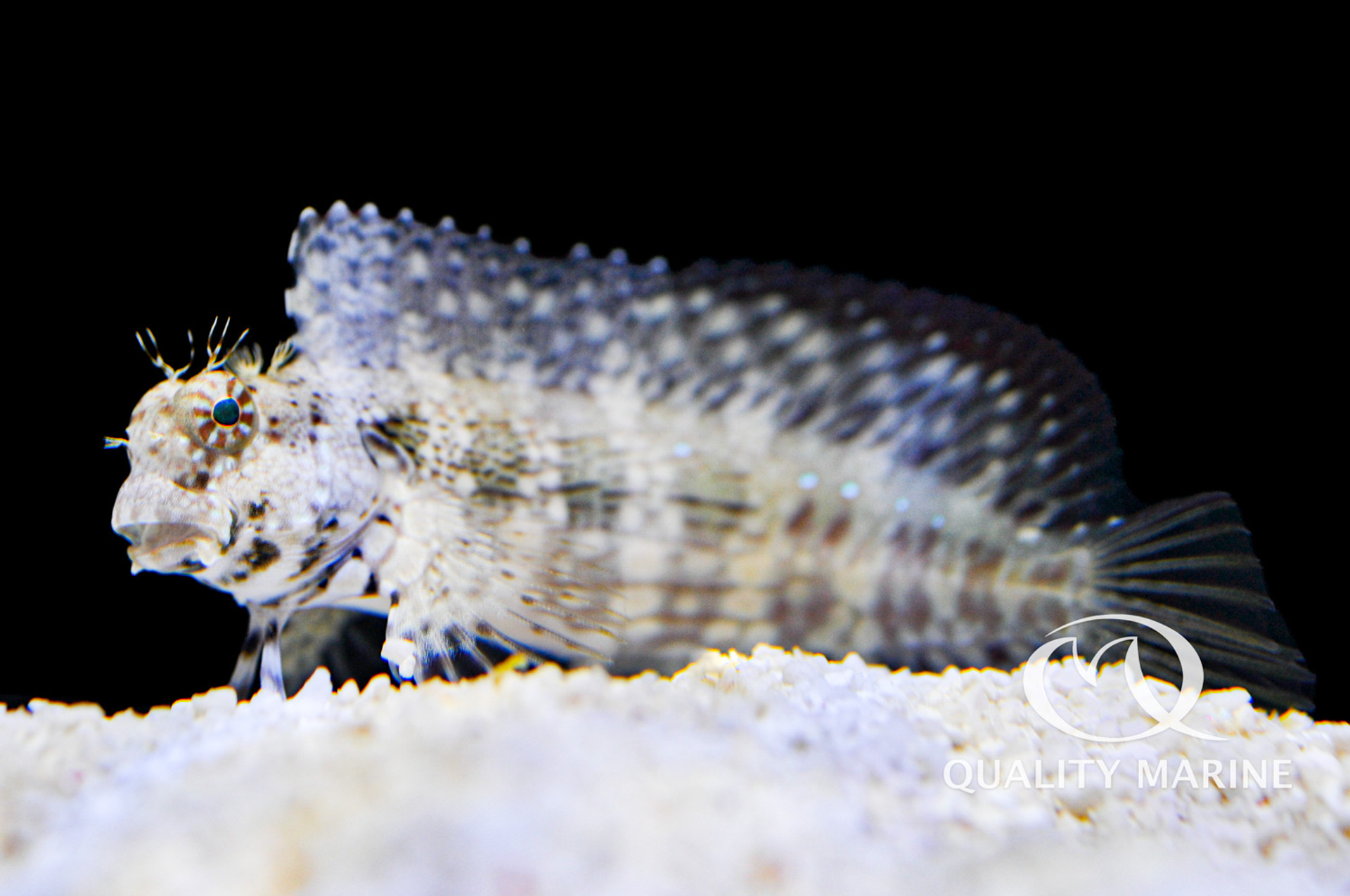The Curious Case of the Lawnmower Blenny

Salarias fasciatus is one of the most personable small aquarium fish you will ever meet. Their lack of swim bladder means they can “hop” from spot to spot like a hawkfish and from there, survey the scene around them. They have hilarious looking eyebrows, which likely serve some purpose, but even if they don't they certainly add to the personality of the little guys. What's curious about them, other than their general demeanor, is why are they called “Lawnmower Blenny,” when the most recent data shows that algae only makes up about 15% of their diet?
Put one in a tank with a hair algae problem, and you'll quickly see why we settled on “Lawnmower” instead of “Jeweled, Lined, Barred, Banded or Painted” Blenny (some of their other common names.) They will pull up substantial amounts of algae while combing for detritus and small inverts in the algae, and some of it gets consumed, but like most animals that consume algae, much of their nutritional requirements come from the hitchhikers on that algae. This is why, even in tanks that are grazing wonderlands, it is very important to get your Blenny eating some prepared foods like thawed mysis or quality pellets. It's also imperative to check your mechanical filtration frequently after adding a Lawnmower to a tank with a lot of hair algae, because as that algae gets put into the water column, it will end up in your filter, causing flow restriction, backups and nutrient buildup.
So who keeps Lawnmower Blennies? Almost everyone should. They are perfect for small tanks, not needing much in the way of swimming space. They are peaceful with just about everything else in an aquarium, with the notable exception of other Blennies, especially other Salarias genus fish, or fish with very similar looks and habits, like some hawkfish. The only real other stocking concern is them getting eaten, or out-competed for food, so choose tank mates and stocking densities accordingly.
Biblio:
FOA, https://fishesofaustralia.net.au/home/species/475... Accessed 25 March 2021
WORMS, http://www.marinespecies.org/aphia.php?p=taxdetai... Accessed 25 March 2021
Randall, J.E., G.R. Allen and R.C. Steene, 1990. Fishes of the Great Barrier Reef and Coral Sea. University of Hawaii Press, Honolulu, Hawaii.
Fishbase, https://www.fishbase.se/summary/Salarias-fasciatu... . Accessed 25 March 2021.
WetWebMedia, Fenner, Robert, http://www.wetwebmedia.com/algaeblensart.htm . Accessed 29 March 2021.